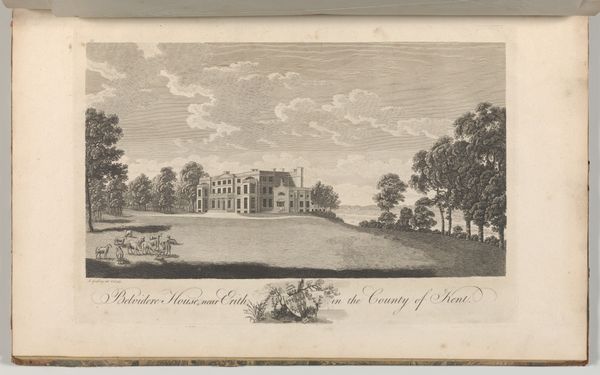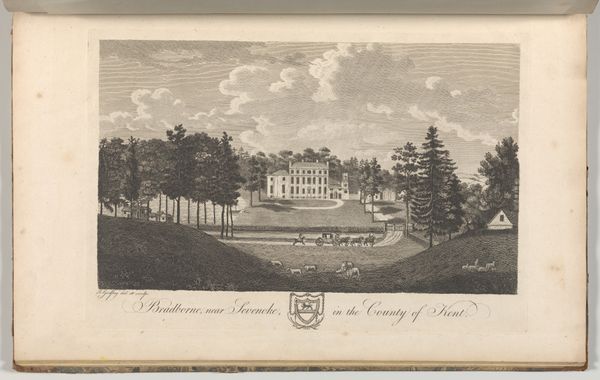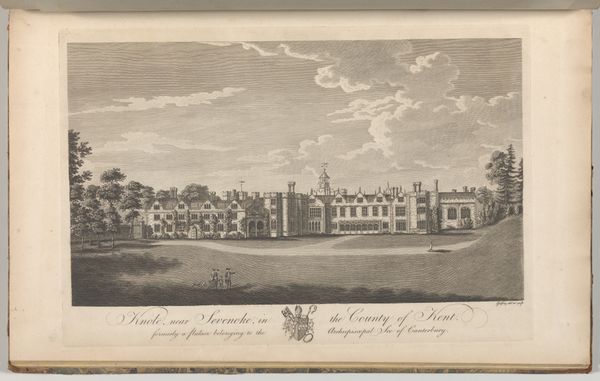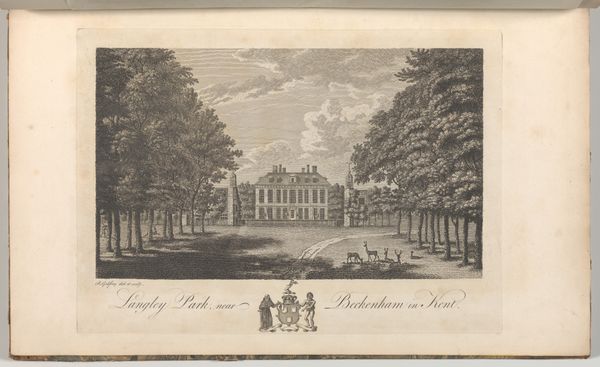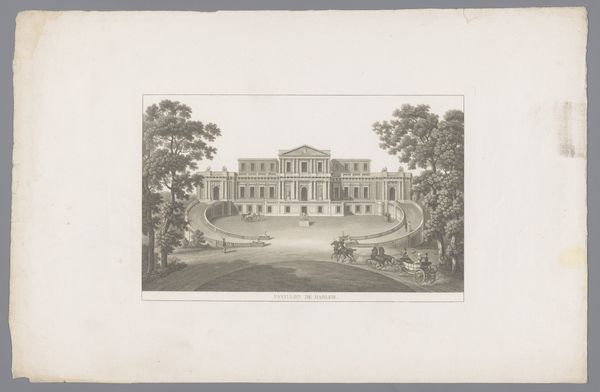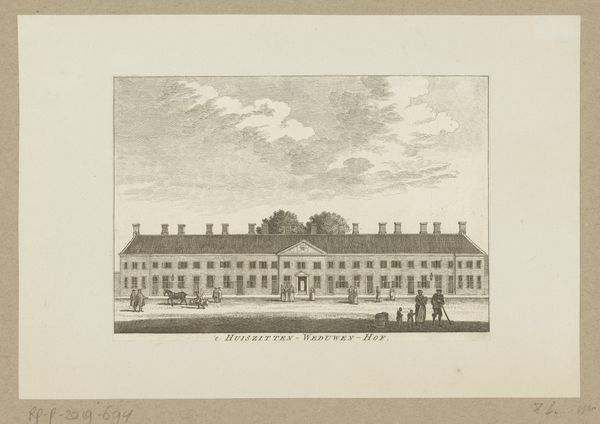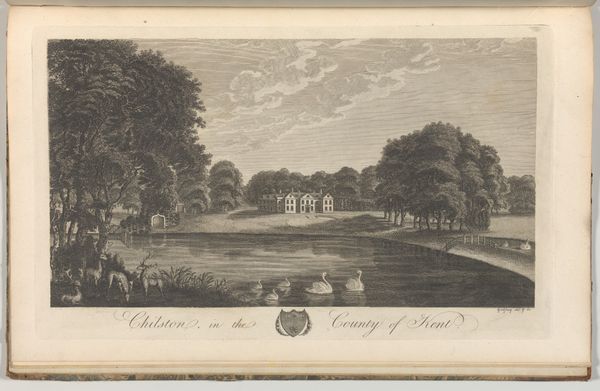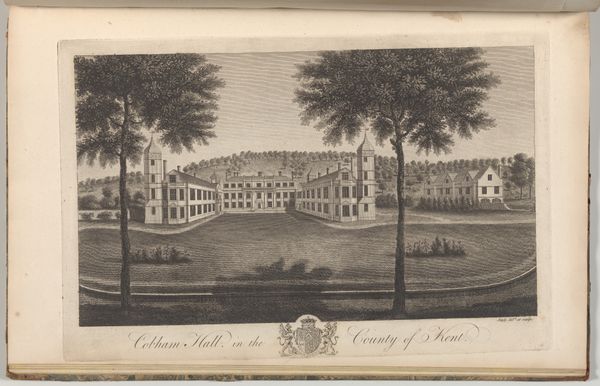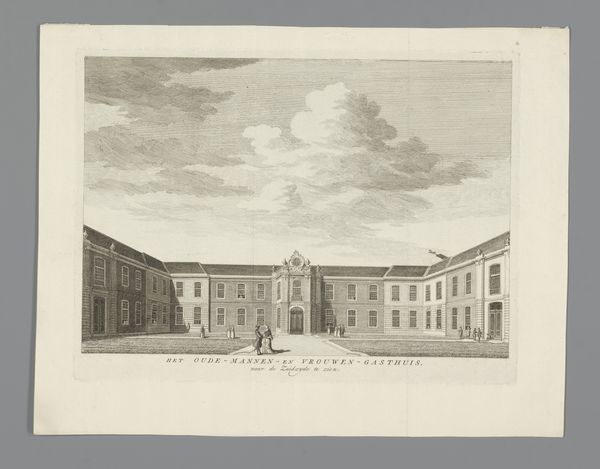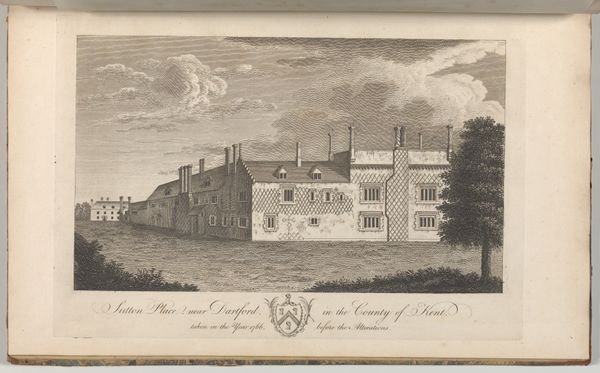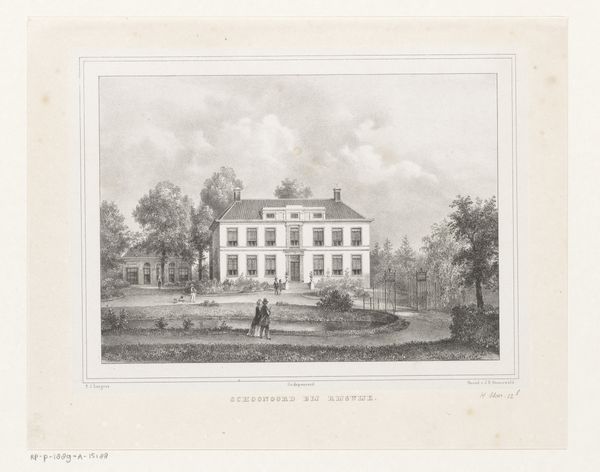
Beckenham Place in the County of Kent, from Edward Hasted's, The History and Topographical Survey of the County of Kent, vols. 1-3 1778
0:00
0:00
drawing, print, etching, engraving, architecture
#
drawing
# print
#
etching
#
landscape
#
cityscape
#
history-painting
#
engraving
#
architecture
#
building
Dimensions: Book: 17 5/16 × 11 × 13/16 in. (44 × 28 × 2 cm) Sheet: 16 15/16 × 10 5/8 in. (43 × 27 cm) Plate: 10 1/16 × 14 in. (25.5 × 35.5 cm)
Copyright: Public Domain
Curator: This is "Beckenham Place in the County of Kent," an etching and engraving by John Bayly, published in 1778 as part of Edward Hasted's "The History and Topographical Survey of the County of Kent." Editor: Wow, it's so precise. Almost sterile. It gives the impression of ordered tranquility, a sort of Georgian pastoral fantasy, perhaps? But, is there something melancholic about the sky? Curator: Note how the architectural representation is given primacy. The building's cubic volume is rendered with a certain detached precision, sitting atop a gentle swell of landscape populated with cattle, trees placed to frame but not obscure. Consider the overall formal composition: How the symmetrical architecture provides balance, offset by the somewhat asymmetrical cloud formation. Editor: The livestock adds a bucolic touch, yes. But I keep coming back to the light, or rather the limited tonal range. Is it a documentary piece? Something in me longs for an artist's "take" or emotive flourish. I also think that maybe there are hidden meanings about the symbolism of land ownership. I'm unsure what the message may be. Curator: Its function within Hasted’s survey certainly implies documentary intentions, cataloging properties within the county. Note also the use of line, particularly in rendering the trees. Bayly seems less interested in mimetic accuracy than a codified shorthand for representing arboreal forms. The encoding itself interests me. Editor: A visual taxonomy then. Almost… administrative. But those looming clouds are an odd counterpoint. I suppose I’m projecting, as usual. Do you suppose it was made on commission? Curator: Doubtless. Such publications depended on aristocratic patronage. Land equaled power, which means such detailed engravings are powerful status symbols. It's about visual claim. Editor: It makes one think about what art does, or even what we ask it to do. Is this piece historical record or propaganda? Perhaps, at the time it was merely considered descriptive? Curator: It’s that liminal space between description and endorsement that intrigues me. Thank you for joining me. Editor: As ever, a thought-provoking view. It changes the way that I experience art and its role in social dialogues.
Comments
No comments
Be the first to comment and join the conversation on the ultimate creative platform.
